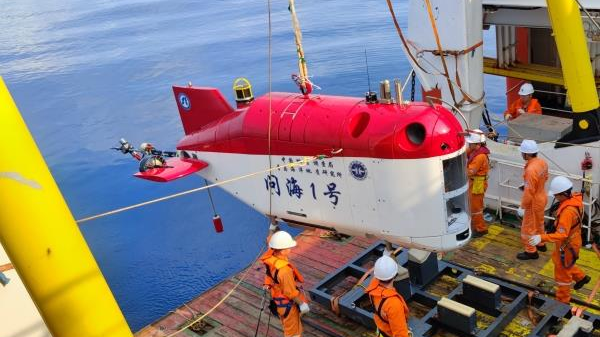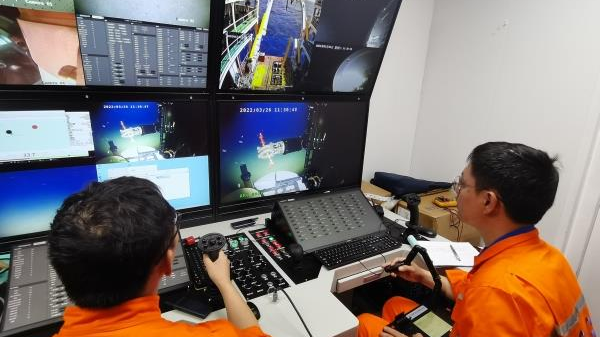China delivers first 6,000-meter-class deep-sea exploration robot
China's self-developed 6,000-meter-level autonomously remote-controlled robot, the Wenhai-1. /CAS
China's first self-developed deep-sea exploration tool, Wenhai-1, an autonomously remote-controlled robot capable of operating at a depth of 6,000 meters, has just ended a sea trial that verified several of its capabilities.
Designed and produced by the Shenyang Institute of Automation of the China Academy of Sciences (CAS), the Wenhai-1, which means "inquires to the ocean," completed 17 dives.
Experts said they verified the capabilities of its high-resolution sounding side scan, shallow dissection acoustic detection, optical detection, and seated and fixed-point fine sampling operations.
Staff members operate the Wenhai-1. /CAS
The deep-sea robot has three working modes: autonomous, remote-controlled and hybrid. And it can switch modes smoothly to better undertake tough scientific tasks.
During the sea trial, the Wenhai-1 also acquired high-precision near-seabed detection data, surface sediment columnar and seabed biological samples. It measured Earth's gravity and magnetic fields, providing technical support for marine resource exploration and multi-physical field matching navigation research.
It is to be installed on the "Haiyang Dizhi-9" (which means "marine geology") ship of the Qingdao Institute of Marine Geology, China Geological Survey, and will facilitate deep-sea scientific research such as surveys on the marine environment, biodiversity, specific targets on the seabed, and in-situ exploration of extreme deep-sea environments and mineral resources.


